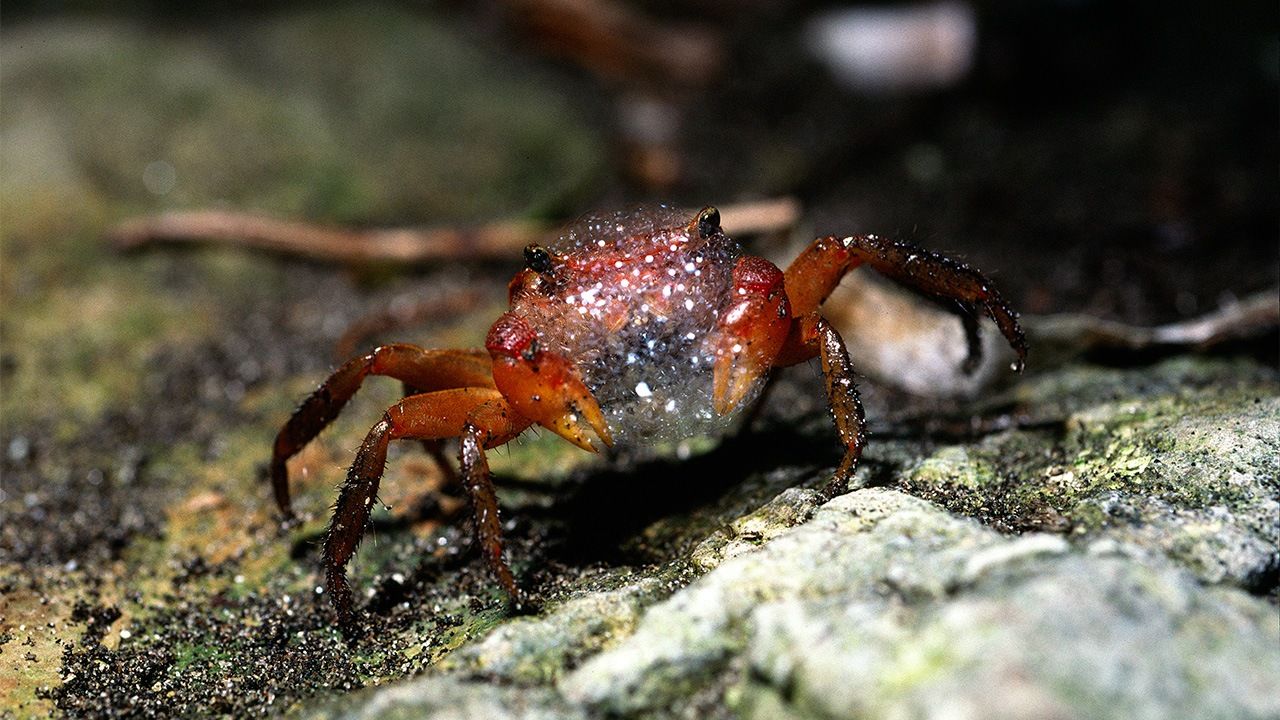
A Journey Through Japanese Haiku
Crab Bubbles
Culture Environment Lifestyle- English
- 日本語
- 简体字
- 繁體字
- Français
- Español
- العربية
- Русский
みじか夜や芦間流るゝ蟹の泡 蕪村
Mijikayo ya / ashima nagaruru / kani no awaBrief night—
crab bubbles
flow between the reeds(Poem by Buson, written around 1771.)
The nights grow shorter as the summer equinox approaches, and these brief periods of dark, so quick to yield to dawn, are called mijikayo. This haiku could be roughly paraphrased, “As the summer night ends and dawn begins, white bubbles blown by a crab flow between the reeds at the riverbank.”
At first glance, this brings to mind the start of Kamo no Chōmei’s classic essay Hōjōki, which brims with a sense of transience: “The river flows endlessly, but its water is never the same. Bubbles float in its pools, bursting and reforming, and do not last for long.” But Buson’s bubbles come from a crab, in a vivid representation of life rather than evanescence.
Instead, the haiku draws on a poem by Ise in the Hyakunin isshu anthology: Naniwa gata / mijikaki ashi no / fushi no ma mo / awade kono yo o / sugu shite yo to ya (Are you saying that / we should not meet again / even for as brief a time / as the space between / two nodes of the Naniwa reeds?) It shares words like mijika (short), ashi (reeds), and yo (night or this world/life). The key sound awa in the original, meaning “to meet,” appears in Buson’s haiku as the “bubbles” from the crab.
Buson is particularly skilled at combining this kind of ingenuity with poetic sentiment, depicting a beautiful summer dawn with a humorous touch.
(Originally published in Japanese. Banner photo © Pixta.)
Related Tags
literature Yosa Buson haiku Japanese language and literature
